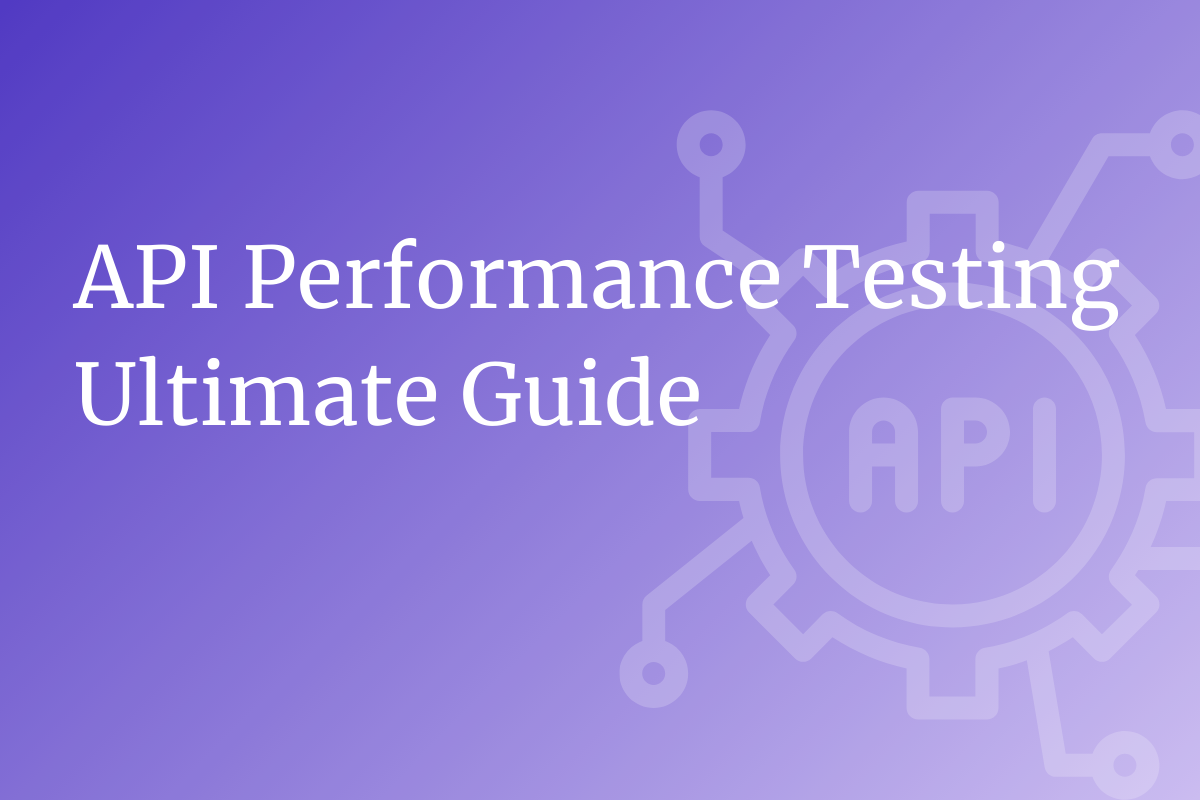API performance is a crucial factor in the effectiveness of web services, impacting how quickly, reliably, and efficiently an Application Programming Interface (API) operates.
But what happens when that engine sputters? A slow, unresponsive API isn’t just a technical hiccup; it’s a critical business problem. It leads to frustrated users, abandoned shopping carts, and a damaged brand reputation. API performance is not a feature; it’s the foundation of user satisfaction and business scalability.
This comprehensive guide will dive deep into the world of API performance. We’ll explore why it’s crucial, define the metrics you need to track, and unveil ten powerful strategies to make your APIs faster and more reliable. We’ll also cover essential design principles and monitoring practices to ensure they stay that way.
Why API Performance Matters
API performance is a critical aspect of web services, referring to how effectively an Application Programming Interface (API) operates in terms of speed, reliability, and overall efficiency. It encompasses various metrics such as response time, throughput, error rate, and scalability, which collectively measure how well an API processes requests and delivers responses to users. Good performance ensures that applications feel responsive and seamless, while poor performance can lead to frustrating user experiences and potential application failures.
The significance of API performance cannot be overstated, as it directly influences user satisfaction and application success. A well-performing API enhances user experience, ensures scalability, and helps maintain a positive reputation for the application. Conversely, slow APIs can deter users, impacting their likelihood of recommending the service, and ultimately affecting revenue and customer retention. Furthermore, as applications grow and handle more traffic, maintaining optimal API performance becomes crucial to prevent bottlenecks and ensure a smooth user experience.
Key API Performance Metrics
Understanding and measuring the right metrics is crucial for optimizing API performance. Here are the key performance indicators every API team should monitor:
- Response Time (Latency): This measures the time between when a request is sent and when a response is received. It’s typically broken down into:
- Network latency: Time spent transmitting data over the network
- Processing time: Time spent executing the request on the server
- Queue time: Time spent waiting in various queues before processing
- Throughput (Requests Per Second): This metric indicates how many requests your API can handle within a given time period. Higher throughput generally indicates better performance, but it should be balanced with response time considerations.
- Error Rates: The percentage of requests that result in errors (typically 4xx and 5xx HTTP status codes). High error rates often indicate performance problems, resource constraints, or design issues.
- Availability/Uptime: The percentage of time your API is operational and accessible. This is typically measured as a percentage (e.g., 99.9% uptime) and is crucial for maintaining user trust and meeting service level agreements.
- Resource Utilization: Monitoring CPU usage, memory consumption, database connections, and other system resources helps identify bottlenecks and optimization opportunities.
- Time to First Byte (TTFB): The time between the initial request and when the first byte of response data is received. This metric helps identify server-side processing delays.
- Percentile Response Times: While average response time is useful, percentile measurements (P50, P95, P99) provide better insights into user experience, especially for identifying performance outliers.
10 Essential Tips to Improve API Performance
1. Implement Effective Caching Strategies
Caching is one of the most impactful optimization techniques for API performance. By storing frequently requested data in fast-access storage, you can dramatically reduce response times and server load.
- HTTP Caching Headers: Implement proper HTTP caching headers like Cache-Control, ETag, and Last-Modified to enable browser and proxy caching. This reduces unnecessary requests to your server for unchanged data.
- Application-Level Caching: Utilize in-memory caches such as Redis or Memcached to store frequently accessed database queries, computed results, or external API responses. This can reduce database load and improve response times by orders of magnitude.
- CDN Integration: Content Delivery Networks can cache API responses geographically closer to users, reducing latency significantly for global applications.
- Smart Cache Invalidation: Implement intelligent cache invalidation strategies to ensure data consistency while maximizing cache hit rates. Consider using cache tags or time-based expiration policies based on data update frequencies.
2. Optimize Database Operations
Database operations are often the primary bottleneck in API performance. Optimizing these operations can yield significant performance improvements.
- Query Optimization: Review and optimize SQL queries by analyzing execution plans, adding appropriate indexes, and eliminating N+1 query problems. Use database profiling tools to identify slow queries.
- Database Indexing: Create strategic indexes on frequently queried columns, but balance this with write performance considerations. Consider composite indexes for multi-column queries.
- Connection Pooling: Implement database connection pooling to reduce the overhead of creating and destroying database connections for each request.
- Read Replicas: Use read replicas to distribute read operations across multiple database instances, reducing load on the primary database.
3. Minimize Payload Size
Large payloads increase network transfer time and processing overhead. Reducing payload size can significantly improve API performance.
Response Compression: Enable GZIP or Brotli compression for API responses to reduce bandwidth usage and transfer times.
- Field Selection: Allow clients to specify which fields they need using query parameters or GraphQL-style field selection, avoiding the transfer of unnecessary data.
- Pagination: Implement pagination for large datasets instead of returning all results in a single response. This reduces memory usage and improves response times.
- Data Format Optimization: Consider using more efficient serialization formats like Protocol Buffers or MessagePack for high-throughput scenarios, though JSON remains the standard for most web APIs.
4. Implement Asynchronous Processing
Not all operations need to be completed synchronously. Implementing asynchronous processing can dramatically improve perceived performance and system throughput.
- Queue-Based Processing: Use message queues like RabbitMQ, Apache Kafka, or cloud-based solutions to handle time-consuming operations asynchronously.
- Webhook Notifications: For long-running operations, immediately return a job ID and use webhooks to notify clients when operations complete.
- Background Jobs: Implement background job processing for tasks like email sending, report generation, or data synchronization.
- Event-Driven Architecture: Design your system to use events for loose coupling between services, improving overall system responsiveness.
5. Optimize Network Communication
Network optimization can significantly impact API performance, especially for distributed systems and mobile applications.
- HTTP/2 Implementation: Upgrade to HTTP/2 to benefit from multiplexing, server push, and header compression features.
- Persistent Connections: Use keep-alive connections to reduce the overhead of establishing new connections for multiple requests.
- Request Batching: Allow clients to batch multiple operations into a single request where appropriate, reducing network round-trip.
- Geographic Distribution: Deploy API endpoints closer to your users using edge computing or multi-region deployments.
6. Implement Rate Limiting and Throttling
While seemingly counterintuitive, proper rate limiting can improve overall API performance by preventing system overload and ensuring fair resource allocation.
- Adaptive Rate Limiting: Implement dynamic rate limiting that adjusts based on current system load and performance metrics.
- Client-Based Limits: Set different rate limits for different client types or subscription levels to ensure premium users get better performance.
- Circuit Breakers: Implement circuit breaker patterns to prevent cascading failures and improve system resilience under load.
- Load Shedding: Drop non-critical requests during peak load to maintain performance for essential operations.
7. Optimize Data Serialization
The process of converting data structures to and from wire formats can be a significant performance bottleneck.
- Efficient Serializers: Choose high-performance serialization libraries and configure them for optimal performance.
- Schema Evolution: Design your data schemas to support evolution without breaking compatibility, reducing the need for multiple API versions.
- Lazy Loading: Implement lazy loading for related data that isn’t always needed, reducing initial payload size and processing time.
- Object Pooling: Reuse objects and buffers where possible to reduce garbage collection overhead.
8. Leverage Microservices Architecture Benefits
When implemented correctly, microservices can improve API performance through better resource allocation and specialization.
- Service Specialization: Design each microservice to handle specific functionalities efficiently, allowing for targeted optimization.
- Independent Scaling: Scale individual services based on their specific performance requirements and usage patterns.
- Technology Diversity: Use different technologies and optimizations for different services based on their specific needs.
- Fault Isolation: Isolate failures to prevent them from affecting the entire system’s performance.
9. Implement Smart Resource Management
Efficient resource management prevents bottlenecks and ensures optimal system performance under varying loads.
- Memory Management: Implement proper memory management to prevent memory leaks and reduce garbage collection overhead.
- Thread Pool Optimization: Configure thread pools appropriately for your workload characteristics and system resources.
- Resource Monitoring: Continuously monitor resource usage and adjust configurations based on actual usage patterns.
- Auto-scaling: Implement automatic scaling based on performance metrics to handle traffic variations efficiently.
10. Use Performance-Oriented Frameworks and Tools
Choose frameworks and tools that are designed with performance in mind and configure them properly.
- High-Performance Frameworks: Consider using frameworks like Fastify for Node.js, FastAPI for Python, or native solutions that prioritize performance.
- Profiling Tools: Use profiling tools to identify performance bottlenecks in your application code.
- Load Testing: Regular load testing helps identify performance limits and optimization opportunities.
- Monitoring Integration: Integrate comprehensive monitoring from the beginning rather than as an afterthought.
Building for Speed: Performance-Driven Design Considerations
When designing APIs, several critical considerations can significantly enhance their performance and usability.
API-First Approach: Design your API contract (e.g., using OpenAPI/Swagger) before implementation. This forces you to think about data models, endpoints, and request/response cycles from the user’s perspective, often leading to a more efficient and logical design.
Stateless Services: Whenever possible, design your API servers to be stateless. This means that every request contains all the information needed to process it, and no session state is stored on the server itself. Stateless services are much easier to scale horizontally behind a load balancer.
Choose the Right Architecture: A monolith can be fast and simple to start with, but a microservices architecture can offer better performance isolation and independent scalability for complex systems. However, be mindful of the added network latency and complexity that microservices introduce.
Separation of Concerns: A fundamental principle in API design is the separation of concerns, which involves structuring the API to isolate different aspects of functionality. This modular design facilitates clearer organization of code and simplifies maintenance and updates. By defining distinct modules for different functionalities, developers can optimize each component independently, improving overall system performance.
Data Fetching Strategies: Efficient data fetching is crucial for optimizing API performance. Traditional REST APIs often lead to issues such as over-fetching and under-fetching, where clients either receive more data than needed or lack essential data in a single request. In contrast, GraphQL provides a flexible approach by allowing clients to specify precisely what data they require. This eliminates unnecessary data transfer and reduces the number of requests needed to fetch related data, thus improving network efficiency and response times.
Versioning: Implementing versioning is another key design consideration that ensures backward compatibility and smooth transitions during updates. A well-structured versioning strategy allows for the evolution of the API without disrupting existing clients. Different versioning methods, such as URI versioning, query string versioning, or header versioning, each come with their own set of benefits and trade-offs. Selecting the right approach can lead to a more reliable API ecosystem that accommodates diverse client needs over time.
Consistent Naming Conventions: Maintaining consistent naming conventions throughout the API enhances clarity and usability. Clear, descriptive names help developers quickly understand the functionality of endpoints and resources, reducing the learning curve and potential errors during implementation. Establishing a naming convention that reflects business logic rather than internal data structures also improves API security and abstraction, minimizing the risk of data leakage.
Multitenancy: In scenarios where an API serves multiple distinct users or organizations (tenants), implementing a multitenant architecture can optimize resource usage and management. A multitenant API efficiently handles requests from various tenants while maintaining isolation between their data and operations. This design consideration not only enhances performance but also supports scalability as the number of users grows. By focusing on these design considerations, developers can create APIs that are not only efficient but also adaptable to evolving user needs, ultimately leading to better performance and enhanced user satisfaction.
Stay Fast: Monitoring & Testing Best Practices
API performance is not a one-time fix; it’s an ongoing commitment. You need robust monitoring and testing practices to catch regressions and identify new bottlenecks as your application evolves.
Monitoring
You can’t fix what you can’t see. Continuous monitoring is your API’s health dashboard.
Use an APM Tool: Application Performance Monitoring (APM) tools like New Relic, Datadog, or Dynatrace are invaluable. They provide deep visibility into your application’s performance, tracing individual requests from the client all the way through your backend services and database, pinpointing the exact source of delays.
Log Everything: Log key performance data for every request, including the response time, status code, and payload size. Aggregate these logs to build dashboards that track your key metrics over time.
Set Up Alerts: Don’t wait for users to complain. Proactively set up alerts that notify you when your key metrics (latency, error rate, etc.) cross a predefined threshold.
Testing
Performance testing helps you understand how your API behaves under pressure and validates that your optimizations are actually working.
Stress Testing: pushes a system beyond its limits to identify breaking points. It monitors how the API behaves under strain and whether error rates increase as resources become depleted. This type of testing is crucial for understanding the maximum performance limits of an API.
Volume Testing: focuses on handling large data sets, such as processing 100 million records at once. This approach helps identify the thresholds at which performance significantly drops, enabling teams to plan accordingly.
Endurance Testing: runs for extended periods to detect issues like memory leaks or resource exhaustion. Analyzing resource trends over time is crucial to catch gradual degradation that may not be apparent during shorter tests.
Automate It: Integrate performance tests into your CI/CD pipeline. This allows you to catch performance regressions before they ever make it to production.
Final thoughts
Optimizing an API is a complex challenge that affects every layer of your technology stack, from front-end protocols to backend code and database queries. There isn’t a single solution that will solve all issues. Instead, achieving superior performance requires a comprehensive approach that includes continuous measurement, optimization, and monitoring.
By implementing the strategies outlined here, such as leveraging caching, optimizing data payloads, writing efficient queries, and designing for scalability, you can create APIs that are not only functional but also enjoyable to use. A fast and reliable API is a valuable asset that enhances user experience, reduces operational costs, and provides a solid foundation for your business’s growth. Start today to transform your API’s performance from a liability into a significant competitive advantage.
ContactContact
Stay in touch with Us


![The 10 Best API Testing Tools [2025 Update]](https://shiftasia.com/wp-content/uploads/2024/07/Top-API-testing-tools.jpg)

